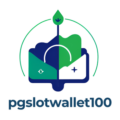When it comes to managing a business’s finances, understanding the components of a a cost accounting system includes which of the following? is crucial. I’ve found that many people overlook the importance of accurately tracking costs, which can lead to poor decision-making and financial inefficiencies. A well-structured cost accounting system not only helps in monitoring expenses but also provides valuable insights for budgeting and forecasting. In this article, I’ll break down the essential elements that a cost accounting system typically includes. From cost allocation methods to variance analysis, each component plays a vital role in helping businesses optimize their operations and improve profitability. Let’s dive into what makes up an effective cost accounting system and how it can benefit your organization.
- A a cost accounting system includes which of the following? is essential for tracking and analyzing business expenses, providing insights for budgeting and financial decision-making.
- Key components of a cost accounting system include cost allocation methods, budgeting, variance analysis, cost centers, financial reporting, and performance metrics.
- Direct costs are directly traceable to specific products or services, while indirect costs, or overhead, support overall operations and require careful allocation.
- Different types of cost accounting systems, such as Job Order Costing, Process Costing, and Activity-Based Costing, cater to diverse business needs and industries.
- Implementing a cost accounting system improves financial clarity, enhances decision-making, identifies inefficiencies, increases profitability, and facilitates strategic planning.
- Challenges in cost accounting systems include data accuracy, complexity of allocation methods, integration with other systems, and the cost of implementation.
A Cost Accounting System Includes Which of the Following?
Cost accounting systems serve as crucial tools for tracking, analyzing, and controlling company expenses. These systems encompass several critical components, including:
- Cost Allocation Methods: These methods determine how overhead and indirect costs are distributed across products and services. Common methods include direct allocation, step-down allocation, and activity-based costing.
- Budgeting: A cost accounting system includes budgeting processes that help businesses forecast future expenses and align resources. Effective budgeting aids in resource allocation and performance evaluation.
- Variance Analysis: This process involves comparing planned financial outcomes with actual results. Variance analysis identifies discrepancies, enabling businesses to adjust strategies promptly.
- Cost Centers: Cost accounting systems categorize operations into cost centers, allowing for detailed tracking of expenses associated with specific departments or projects.
- Financial Reporting: These systems generate detailed financial reports, providing insights into profitability and cost structure. Reports may include income statements, balance sheets, and cash flow statements.
- Performance Metrics: Key performance indicators (KPIs) inform decision-makers of cost efficiency and operational effectiveness. Metrics might include cost-per-unit, gross margin, and budget variance percentages.
Implementing a robust a cost accounting system includes which of the following? enhances financial clarity, enabling informed decision-making. By focusing on the precise tracking of costs, businesses can identify inefficiencies and optimize resource use, ultimately improving profitability.
Key Components Of A Cost Accounting System![]()
A a cost accounting system includes which of the following? comprises various components that ensure effective tracking and management of expenses. Understanding these elements helps enhance financial clarity and informed decision-making.
Direct Costs
Direct costs refer to expenses that can be directly traced to a specific product, service, or project. These expenses include materials, labor, and manufacturing costs associated with production. For instance, raw materials such as steel for automobiles and wages for assembly line workers fall under direct costs. Accurate tracking of direct costs enables businesses to determine pricing strategies and profit margins effectively.
Indirect Costs
Indirect costs, also known as overhead costs, encompass expenses that cannot be traced directly to a single product or service. These costs support overall business operations and include utilities, rent, administrative salaries, and depreciation. For example, electricity used in a factory or the salary of a manager overseeing multiple projects counts as indirect costs. Proper allocation of indirect costs ensures a more accurate understanding of total production costs and helps identify areas for cost savings.
Types Of Cost Accounting Systems
A a cost accounting system includes which of the following? includes various methodologies to track and analyze costs effectively. The three primary types are Job Order Costing, Process Costing, and Activity-Based Costing.
Job Order Costing
Job Order Costing assigns costs to specific jobs or batches. This system is ideal for customized products or services, where each order requires different resources. It helps in tracking direct materials, direct labor, and overhead for each job. I use this method to ensure precise pricing, which reflects the actual expenses incurred, thus improving profit margins. Industries like construction and custom manufacturing often implement Job Order Costing for this reason.
Process Costing
Process Costing accumulates costs over a continuous production process. This system is suitable for industries that produce homogeneous products, such as food manufacturing or chemicals. Costs are averaged over units produced within a given period. I find this method useful, as it simplifies cost calculations and highlights costs per unit, enabling better insights into production efficiency. Monthly cost reports help identify any significant variances that may require attention.
Activity-Based Costing
Activity-Based Costing (ABC) assigns costs based on activities that drive expenses. This system allocates overhead more accurately by tracing costs to specific activities that contribute to the production process. I utilize ABC to gain a deeper understanding of cost drivers, allowing me to identify inefficiencies and areas for cost reduction. This method is valuable in complex manufacturing environments where indirect costs represent a large portion of total expenses. By focusing on actual resource consumption, ABC enables more effective budgeting and forecasting.
Benefits Of Implementing A Cost Accounting System
Implementing a a cost accounting system includes which of the following? provides several key advantages that enhance business operations and financial performance.
- Improved Financial Clarity
A cost accounting system offers a detailed view of expenses. It helps identify where money is spent and assists in tracking financial performance against budgets. - Enhanced Decision-Making
Accurate cost data supports informed decision-making. I can analyze cost structures, enabling better pricing strategies and resource allocation. - Identifying Inefficiencies
A cost accounting system highlights operational inefficiencies. By analyzing variances between budgeted and actual costs, I can pinpoint areas needing improvement. - Increased Profitability
Understanding direct and indirect costs boosts profitability. I can make adjustments to reduce overhead and focus on high-margin products or services. - Better Budgeting and Forecasting
Accurate cost tracking aids in more reliable budgeting and forecasting. I can predict future expenses and allocate resources effectively. - Performance Measurement
Implementing key performance indicators (KPIs) allows me to measure operational effectiveness. Tracking these metrics helps assess the success of strategies and initiatives. - Compliance and Reporting
A cost accounting system streamlines financial reporting and ensures compliance with regulations. It simplifies the process of preparing detailed financial disclosures. - Strategic Planning
Cost insights inform long-term strategic planning. With a comprehensive understanding of costs, I can develop focused initiatives to drive growth and sustainability.
Challenges In Cost Accounting Systems
Cost accounting system includes which of the following? face several challenges that impact their effectiveness. These challenges can hinder accurate financial analysis and decision-making.
- Data Accuracy
Data accuracy issues arise from human error or faulty data entry, leading to incorrect cost calculations. Inaccurate data can distort financial reporting and budgeting processes. - Complexity of Allocation
The complexity involved in allocating indirect costs poses difficulties. Determining the right method for distributing overhead costs requires careful consideration and can complicate the process. - Integration with Other Systems
Integration challenges exist between cost accounting systems and other business management systems. Disparate systems can cause data silos, reducing efficiency and increasing the risk of errors in reporting. - Resistance to Change
Resistance to adopting new cost accounting practices often occurs within organizations. Employees accustomed to outdated methods may struggle to embrace new systems, affecting overall implementation success. - Regulatory Compliance
Keeping up with changing regulations can present compliance challenges. Cost accounting systems need to adapt to various accounting standards, which can complicate implementation and ongoing operations. - Real-Time Data Access
Accessing real-time data remains a challenge for many organizations. Delays in information availability can hinder timely decision-making, impacting operational efficiency. - Training and Expertise
Lack of adequate training can lead to insufficient understanding of cost accounting systems. Without knowledgeable personnel, businesses might misuse these systems, limiting their effectiveness. - Cost of Implementation
The initial cost of implementing and maintaining a cost accounting system can be considerable. Businesses must assess whether the benefits outweigh these costs to ensure a wise investment.
A well-implemented cost accounting system is vital for any business aiming to thrive in today’s competitive landscape. By accurately tracking both direct and indirect costs I can make informed decisions that enhance profitability and operational efficiency. The insights gained from budgeting variance analysis and performance metrics empower me to identify inefficiencies and optimize resource allocation.
Despite the challenges that may arise during implementation I’ve found that the benefits far outweigh the hurdles. Embracing a robust cost accounting system not only clarifies financial data but also supports strategic planning and long-term growth. With the right tools and processes in place I’m confident in my ability to navigate the complexities of cost management and drive my business forward.



